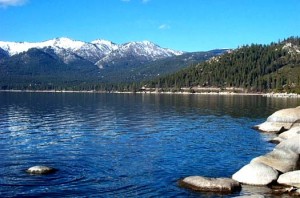- Less than two percent of the freshwater on our planet exists in a readily usable form for human uses. And of this total, it is estimated that lakes contain more than 90% of all the liquid freshwater on the earth’s surface. Thus, this water source is important for meeting the needs of both humans and ecosystems, including the life-supporting services provided to humanity by the latter.
- Lakes and reservoirs provide a range of resource values, including drinking water, irrigation water, navigation, fisheries, tourism, recreation, flood and drought management, climate mediation, as well as having religious and historic values.
- In addition to containing the vast majority of the liquid freshwater on the surface of our planet, humans use lakes for more purposes than any other type of water system. Accordingly, lakes also are subject to more use conflicts than any other type of water system. Although seemingly a problematic feature, their effective management also a greater potential for developing sustainable solutions to water resources issues than any other type of water system.
- In contrast to flowing rivers, lakes and reservoirs have long water residence times, an indication of the average time water will spend in a lake. Lakes with long retention times are slow to respond to many inputs, being able to absorb floodwaters and pollutants, for example, without exhibiting immediate changes.
- Lakes also act as a sink for water and material inputs from diverse sources from their surrounding drainage basins. The mixing of these inputs within a lake ensures that the problems associated with them are disseminated throughout the volume of a lake. Thus, it is not possible for a pollutant to affect only a portion of a lake, nor is it possible to treat only a portion of a lake. Rather, water-related problems are typically lake-wide in nature.
- Another unique feature of lakes is that they exhibit complex response dynamics. Thus, the physical, chemical and biological characteristics of lakes and reservoirs can be viewed as a type of barometer of the consequences of human activities within their surrounding drainage basin.
The section “Did You Know…?” is taken from the 3rd World Water Development Report “Water in a Changing World“.


